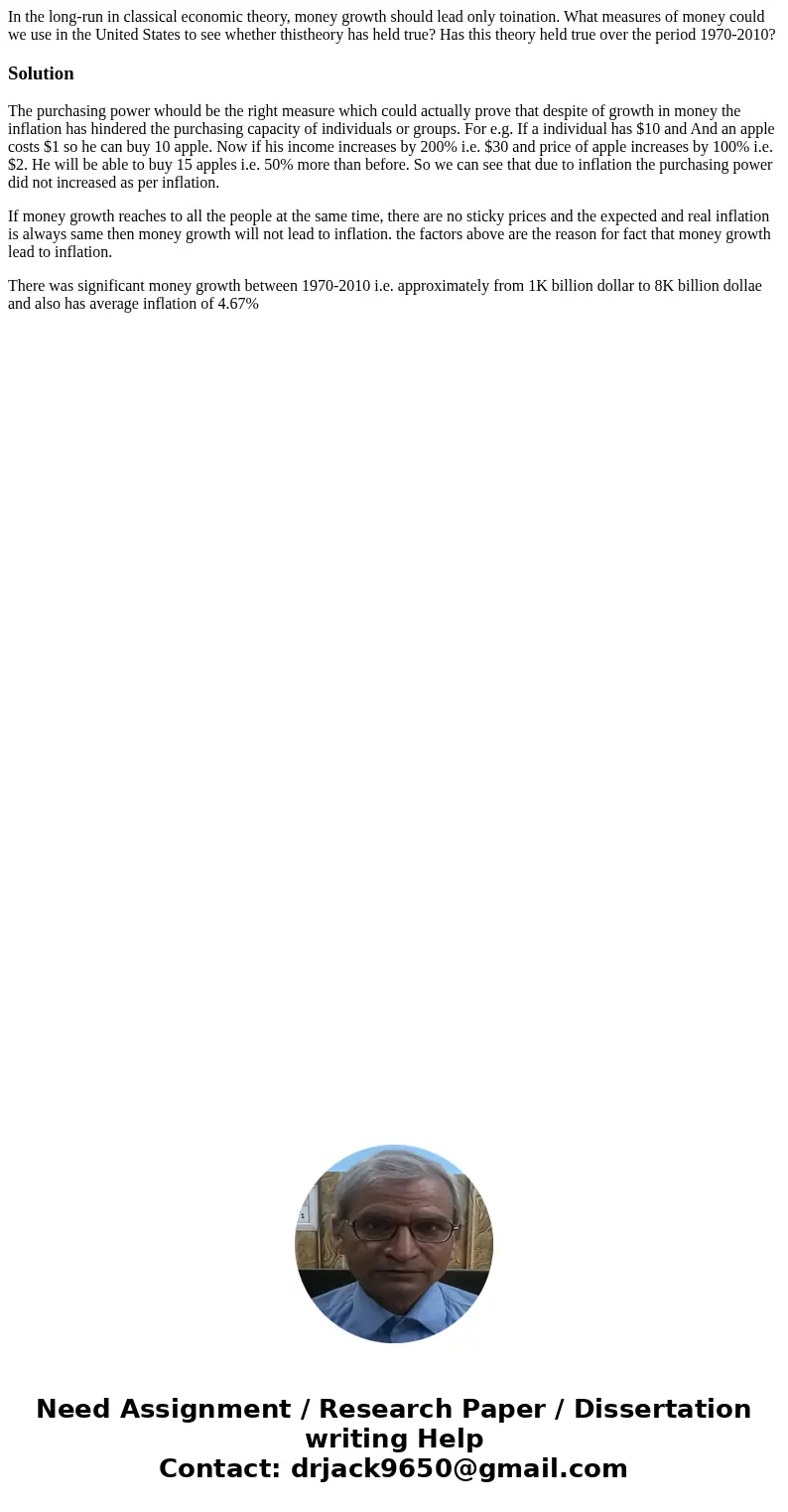In the longrun in classical economic theory money growth sho
In the long-run in classical economic theory, money growth should lead only toination. What measures of money could we use in the United States to see whether thistheory has held true? Has this theory held true over the period 1970-2010?
Solution
The purchasing power whould be the right measure which could actually prove that despite of growth in money the inflation has hindered the purchasing capacity of individuals or groups. For e.g. If a individual has $10 and And an apple costs $1 so he can buy 10 apple. Now if his income increases by 200% i.e. $30 and price of apple increases by 100% i.e. $2. He will be able to buy 15 apples i.e. 50% more than before. So we can see that due to inflation the purchasing power did not increased as per inflation.
If money growth reaches to all the people at the same time, there are no sticky prices and the expected and real inflation is always same then money growth will not lead to inflation. the factors above are the reason for fact that money growth lead to inflation.
There was significant money growth between 1970-2010 i.e. approximately from 1K billion dollar to 8K billion dollae and also has average inflation of 4.67%

 Homework Sourse
Homework Sourse